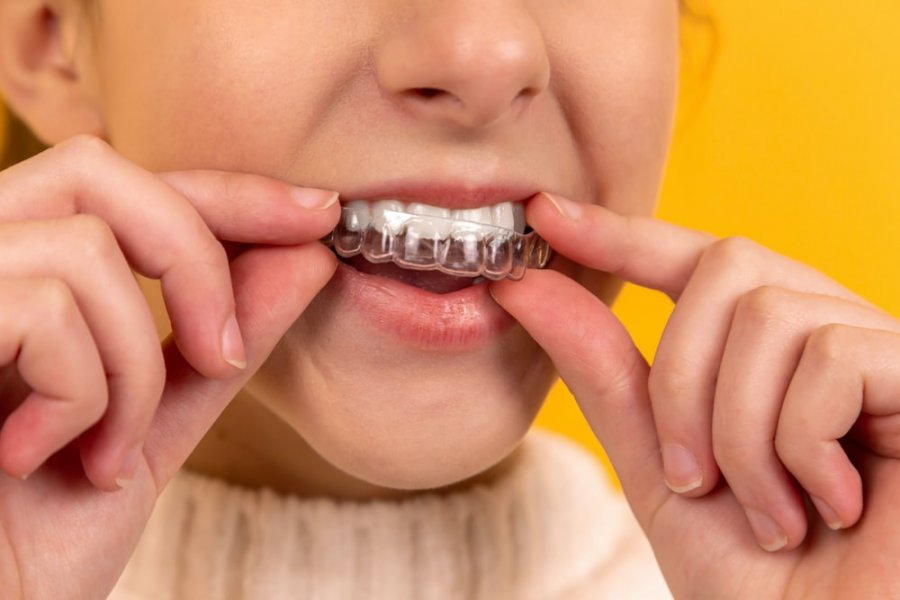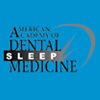What Is Cosmetic Dentistry?
While many of you may have heard the term, most people don’t know the definitive answer to, what is cosmetic dentistry? Surprisingly, this field of dentistry has been around for many decades and makes up a large portion of the dental work people get done in today’s time.
Moreover, as the world is shifting towards promoting dental health and care, cosmetic dentistry is becoming increasingly popular with today’s youth. Along with dental care, this is also partly due to the advancement of technology and the ability for cosmetic procedures to be performed optimally.
To help you fully understand how the words ‘cosmetic’ and ‘dentistry’ come together, we will be going over what exactly this branch of dentistry entails and how it can help you! So, without further ado, let’s get into it.
What Is Cosmetic Dentistry?
As the name suggests, cosmetic dentistry consists of any type of dental work that is performed with the goal of improving the appearance of one’s jaw, teeth, gums, etc. This covers a broad range of procedures that can be focused on changing anything from the color of your teeth to the alignment of your jaw when you bite down. For example, some prominent dental procedures that fall under this category are teeth whitening, bonding, etc.
As such trends are becoming increasingly popular in today’s time, the term ‘cosmetic dentistry’ is gaining traction and many dentists have become focused on this field. These dentists, sometimes also known as ‘cosmetic dentists,’ specialize in such aesthetic procedures on the teeth, gums, etc.
That being said, while it is a legitimate sub-field, the term has not been medically approved in many places. Due to this, it is used as more of a placeholder to identify a certain type of procedure.
Benefits
To get a better understanding of cosmetic dentistry and why it is so popular, here are some of the benefits you can get from such procedures:
Increased Confidence
An important part of being confident and motivated in your life is dependent on how you look. While it may not be as important for everyone, most people are much more driven and confident in themselves when they have a presentable and clean appearance. Among other factors, this involves having a clean and white smile that can attract compliments from others.
Thus, as cosmetic dentistry is directly meant to improve the appearance of your teeth, gums, and bite, it can be directly correlated to increased confidence and happiness. This is most clearly presented during a study in the National Library of Medicine that goes over the effect of an orthodontic intervention on mental health.
Reduced Pain
One of the first side effects of a misaligned tooth or bad bite tends to be pain. This could be a lingering toothache that doesn’t subside or a sharp pain that strikes when you eat or take a bite. Surprisingly, many aesthetic dental procedures can simultaneously also put a stop to the pain caused by such issues.
This is thanks to various procedures that can re-align your bite and make your teeth much more natural. For example, operations such as reshaping are performed to remove excessively long parts of teeth or fix crooked teeth which can often be a cause of extreme pain. Similarly, other dental procedures like straightening are also known to provide both aesthetic and pain relief.
Improved Oral Hygiene
Imagine you have various crooked teeth throughout your lower jaw and try to brush in between them. Unlike having a symmetrical set of teeth, it can be quite hard to get your brush into the tight and cramped spaces in between these teeth. Due to this, you can often have areas between crooked teeth that aren’t cleaned as well and end up with food particles and plaque stuck in them.
This can not only cause cavities and tooth decay, but can lead to larger problems such as abscesses in the long run. Thankfully, various cosmetic dental procedures such as straightening with braces or aligners can re-align your teeth and allow you to maintain your dental hygiene optimally.
Can Aid With Digestion
The first part of your digestive system takes place when you begin chewing your food as it can make a huge difference in the effort your stomach has to do. The better your bite is, the more your teeth will be able to grind up food before it enters your stomach. Due to this, the more balanced your bite, the smaller you will be able to chew up your food.
This is especially important when it comes to high-fiber foods that can be difficult to digest as the smaller particles can immensely reduce the burden on your digestive system improving your overall health.
Sub-Fields Within Cosmetic Dentistry
Dental work that comes under the umbrella of cosmetic dentistry can often be categorized into two distinct types of dental specialties. These are:
Orthodontics
Orthodontics is the dentistry specialty that deals with misaligned bite patterns, teeth, and jaws. It is focused on correcting, diagnosing, preventing, and managing such conditions which often involve dental work such as straightening, jaw surgery, etc. depending on the type and severity of a patient’s condition.
Prosthodontics
Prosthodontics is a dental specialty that deals with prostheses for dental purposes. This covers a wide range of apparats and procedures ranging from fake teeth to veneers and various others. Most of these are aimed to replace lost teeth and improve one’s aesthetic or dental health.
Common Cosmetic Dentistry Procedures
Now that you have an answer to the question, ‘what is cosmetic dentistry?’ we can delve deeper into what procedures this branch of dentistry entails. Most of these procedures fall under either Orthodontics or Prosthodontics as explained above meaning it will be either focused on the alignment of misaligned teeth/bite or using dental prosthesis. So, the most common procedures are:
Teeth Whitening
By far the most common and also one of the least invasive, teeth whitening or bleaching is commonplace when it comes to cosmetic dental procedures. It involves lightening the color of your teeth which is often done to reduce a yellow tint that can arise due to various reasons. As this yellow coloration is linked with a lack of hygiene, whitening is popular to get back a bright and pearly white smile.
Whitening is also one of the safest dental procedures you can get done and can be done by both a dentist or by yourself. When it comes to personal whitening, most stores offer products such as whitening strips or UV light devices. These products slowly break away at the enamel above your teeth and reveal a whiter layer.
On the other hand, when performed by a dentist such as at our Smiles By Dixon Clinic, you can expect whiter and quicker results. This is because professional whitening is performed with either peroxide gel or with an argon laser which can instantly bleach your teeth and turn them white.
Straightening
Another procedure that you have probably already heard of, straightening refers to the process of aligning one’s teeth by moving them into the correct position based on a person’s jaw and bite. This is performed for various reasons ranging from aesthetic appeal to pain or discomfort due to misaligned teeth.
Over the past few decades, metal braces have been used to perform teeth straightening. This procedure is so popular that at any moment in time at least 4 million people in the US alone will have braces on. These braces are often kept on for various months and re-aligned based on developments to ensure that your teeth are aligned completely and permanently.
However, in recent times, aligners have begun to replace braces as a more comfortable and manageable method for teeth straightening. Aligners are clear, custom-made mouthguards that slowly bring your teeth into the correct position as you wear them. They are preferred due to their ability to be worn and taken off at the convenience of the patient.
Dental Veneers
Veneers comprise of a thin layer of material that is placed over your tooth to provide it with a fuller and more natural look. This is often done to cover teeth that have been damaged, are discolored, or have been worn down due to other reasons.
Veneers are most commonly made out of two types of materials, composite or dental porcelain. Composite veneers are used for shorter spans of time such as 3-4 years as they have a shorter lifespan than their porcelain counterparts. On the other hand, laminate or porcelain veneers are much stronger and can be used to replace multiple teeth for 5 years+ without issue.
Thanks to their customizability and replaceability, veneers are a great way for people to get their complete smile back without having to damage their teeth too much. That being said, the process of attaching veneers can involve some work on your teeth to make sure they fit properly.
Dental Implants
Dental implants are simple prosthetic replacements that can be used to replace gaps or missing teeth. These implants are one of the most common solutions to missing teeth and can completely fix the look of your bite and jaw. Moreover, dental implants can be used for all types of teeth and are customized to ensure they fit perfectly in your jaw.
While dental implants used to be made of various other materials, they are now much sturdier and often used to support false teeth. Most commonly, dentists will use titanium implants as they can be screwed into your jaw without issue and can last for many years without issue. Along with this, these implants are highly unlikely to lead to complications such as infections or damage.
Apart from this, most dental implants are divided into three distinct parts. This consists of the implant device which is the titanium screw inserted into the bone. Following this, the abutment is placed which connects the implant device to the crown. Finally, the crown or fake tooth is attached to complete the dental implant.
Inlays & Onlays
Commonly referred to as indirect fillings, inlays and Onlays are types of fillings that are made for your teeth in dental laboratories. They are used when a tooth has internal decay and needs to be filled to support its structure. Depending on the type of damage, either an inlay or onlay is used.
Inlays are used in case there is no damage to the tooth cusps. In these situations, the inlays are placed on top of the tooth surface and will provide an adequate filling. On the other hand, Onlays are used in the opposite situation when the cusp of a tooth is damaged. Both of these provide support and are pivotal in stopping the decay of teeth or any type of further deterioration.
Gum Lift
A gum lift is a dental procedure in which your gum line is brought up and sculpted in case you have a receding or uneven gum line. This procedure is performed for various reasons and can provide a cleaner/fuller appearance to your teeth. Along with this, a more symmetrical appearance to your gum line can also lead to the appearance of a longer and more even bite.
In addition to the aesthetic benefits, a gum lift can also lead to various health benefits and correct conditions. For example, one of the most prominent conditions that a gum lift can cure is gingival zeniths which are essential in terms of damaging tooth wear. However, gum lifts are also one of the least popular procedures on this list.
Takeaway
We hope that you now understand what cosmetic dentistry is and can make decisions on whether or not you want to improve the look of your teeth. That being said, remember that many cosmetic procedures also provide health benefits and can improve things such as your oral hygiene and digestive health. If you are still confused and want expert advice, click here. At Smiles By Dixon, we can guide you through the procedures so you can make an informed decision about your teeth!














